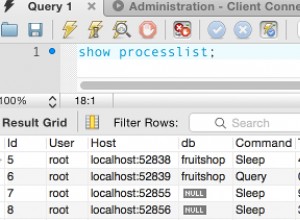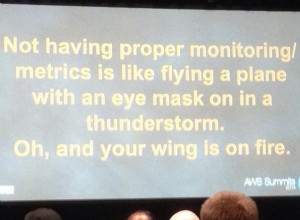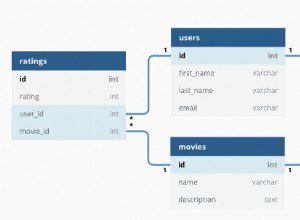Oto dwie opcje wyszczególnienia wyzwalaczy w bazie danych PostgreSQL.
Wyzwalacze information_schema.triggers Zobacz
Ten widok zawiera wszystkie funkcje i procedury w bieżącej bazie danych, które aktualny użytkownik posiada lub ma uprawnienia inne niż SELECT na.
Oto przykład zwracania listy wyzwalaczy:
SELECT
trigger_schema,
trigger_name,
event_object_table
FROM
information_schema.triggers
ORDER BY
event_object_table;Przykładowy wynik:
+----------------+-----------------------+--------------------+ | trigger_schema | trigger_name | event_object_table | +----------------+-----------------------+--------------------+ | public | last_updated | actor | | public | last_updated | address | | public | last_updated | category | | public | last_updated | city | | public | last_updated | country | | public | last_updated | customer | | public | film_fulltext_trigger | film | | public | film_fulltext_trigger | film | | public | last_updated | film | | public | last_updated | film_actor | | public | last_updated | film_category | | public | last_updated | inventory | | public | last_updated | language | | public | last_updated | rental | | public | last_updated | staff | | public | last_updated | store | +----------------+-----------------------+--------------------+
W razie potrzeby możesz dodać więcej kolumn. Na przykład możesz dołączyć action_statement kolumna zawierająca definicję wyzwalacza.
pg_trigger Katalog
pg_catalog.pg_trigger katalog przechowuje wyzwalacze w tabelach i widokach.
Oto przykład kodu, który zwraca listę wyzwalaczy i ich tabelę:
SELECT
tgname AS trigger_name,
tgrelid::regclass AS table_name
FROM
pg_trigger
ORDER BY
table_name,
trigger_name;To może zwrócić sporo wyzwalaczy, w zależności od bazy danych.
Możemy zawęzić to tylko do tych wyzwalaczy dla danej tabeli w następujący sposób:
SELECT
tgname AS trigger_name
FROM
pg_trigger
WHERE
tgrelid = 'public.film'::regclass
ORDER BY
trigger_name;Przykładowy wynik:
+------------------------------+ | trigger_name | +------------------------------+ | RI_ConstraintTrigger_a_24890 | | RI_ConstraintTrigger_a_24891 | | RI_ConstraintTrigger_a_24900 | | RI_ConstraintTrigger_a_24901 | | RI_ConstraintTrigger_a_24915 | | RI_ConstraintTrigger_a_24916 | | RI_ConstraintTrigger_c_24907 | | RI_ConstraintTrigger_c_24908 | | RI_ConstraintTrigger_c_24912 | | RI_ConstraintTrigger_c_24913 | | film_fulltext_trigger | | last_updated | +------------------------------+




